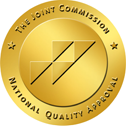Why Do Some People Become Substance Abusers?
Some substances have a chemical makeup that makes them more addictive, so the choice of substance has something to do with why some become addicted while others do not. Then there is the genetic factor. A person’s genes may make all the difference in how easily addicted they may be. Added to all these are more intangible factors, such as psychological problems, past abuse or trauma and present social situation.
Casa Palmera drug addiction treatment center near San Diego, California recognizes there are both physical and psychological parts to addiction. “Psychological” addictions generally cause milder (though still quite uncomfortable) withdrawal symptoms. Stimulants typically cause a psychological addiction. Physiological dependence, when the body adapts to the substance being in it, makes users need more and more of it to function. Opiates and sedatives cause both physical and psychological dependence.
Too Many Options for Substance Abuse
Just as there are many factors that lead to addiction, there are many things to which you can become addicted. All are best addressed through care at an inpatient a residential treatment center.
- Methadone: Once hailed as a way to ease heroin withdrawal, Methadone poses its own set of risks and is regularly abused. It is addictive and has become a street drug.
- Crystal Meth: Crystal meth, a form of methamphetamine, is snorted, injected, or smoked. Users often become agitated and even psychotic, and develop a characteristic sinking of the face or “meth mouth” (usually from severely decayed teeth). Amphetamine abuse causes high blood pressure, stroke, heart problems and organ damage.
- Amphetamines: Amphetamines are stimulants, and their effects last longer than the high associated with drugs like cocaine. Along with short term hyperactivity and euphoria, long term use of amphetamines leads to psychosis, convulsions, and mental illness.
- Club Drugs:
- Ecstasy (MDMA), a/k/a “E”, “X”, “XTC”, an amphetamine based drug that causes hallucinations, gives users an overabundance of energy and lasts for several hours. It causes dehydration, organ failure and death. Confusion, anxiety, depression, trouble sleeping and memory loss are long term affects associated with using ecstasy. “Molly”, short for molecule, is considered to be a pure version of MDMA. This substance has become increasingly popular in the past decade.
- GHB depresses the central nervous system and can cause death by drastically lowering heart rates and breathing rates. When it is combined with alcohol, it is even more dangerous.
- Ketamine is an animal anesthetic which is snorted, smoked, or injected. People hallucinate when using ketamine, and they may become delirious.
- Rohypnol, a/k/a/ “Roofies”, is a sedative that is often mixed into alcohol. It is infamous as the “date rape” drug. It cause amnesia plus drowsiness and confusion.
- LSD, or Lysergic Acid Diethylamide, or “Acid”, is a potent hallucinogen. People on it behave oddly and unpredictably, and may have high heart and respiration rates. Using it may lead to permanent psychosis and “acid flashbacks”.
- Angel Dust or PCP is an anesthetic that causes users to go into a trance-like state, during which they become delusional and irrational. Many become suicidal. Some long term effects are memory loss and depression.
- Anabolic steroids: People think of these only as body building drugs with some bad side effects. Unfortunately, there is evidence they are addictive and that withdrawal from them can cause marked depression.
- Inhalants: Paint thinner, gasoline, glues, propane, aerosol can propellants, nitrous oxide, laughing gas, and whippets are just some of the substances abused as inhalants. Using any of them deprives the body of oxygen and causes irregular heartbeat. Loss of sense of smell, in addition to nosebleeds, are common side effects.
- Bath salts: synthetic drugs marked by recent increase in reports of abuse and usage. These are man-made chemicals that act as a stimulant drug and are often sold masked as another drug, such as Ecstasy
- K2/Spice, or Synthetic Marijuana: Mixture of herbs and plant materials that have artificial chemicals added to mimic the effects of THC.
Basically, if you cannot control your need for something, you are addicted. Deciding upon how to deal with the addiction requires looking for the right substance abuse treatment center. San Diego has one of the best, Casa Palmera behavioral health facility.
At our drug addiction treatment center, we believe finding the best course of treatment for an addicted person requires a full review of their medical, psychological and social history in addition to identifying the substances abused. Once a treatment plan is identified, treatment begins. At Casa Palmera, a broad spectrum of recovery programs and activities make it possible for our clients to regain their lives and leave addictions behind. We will teach you, through our programs, how to center yourself, regain your inner and outer strength, and regain the person you truly are.




